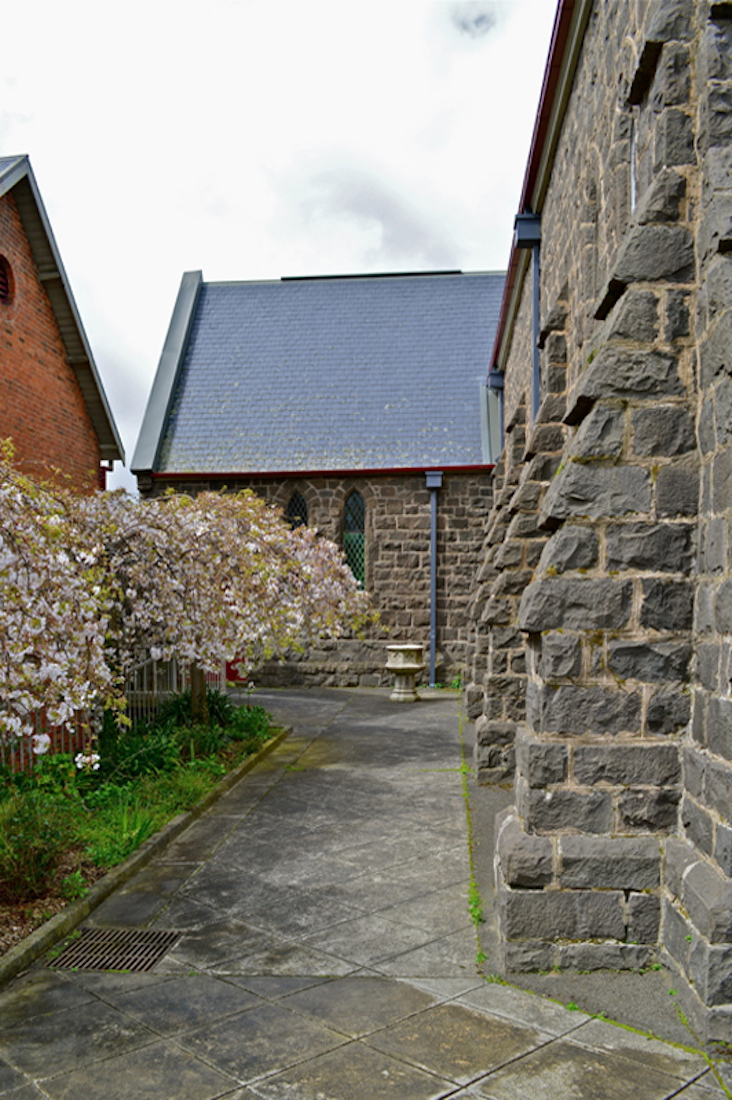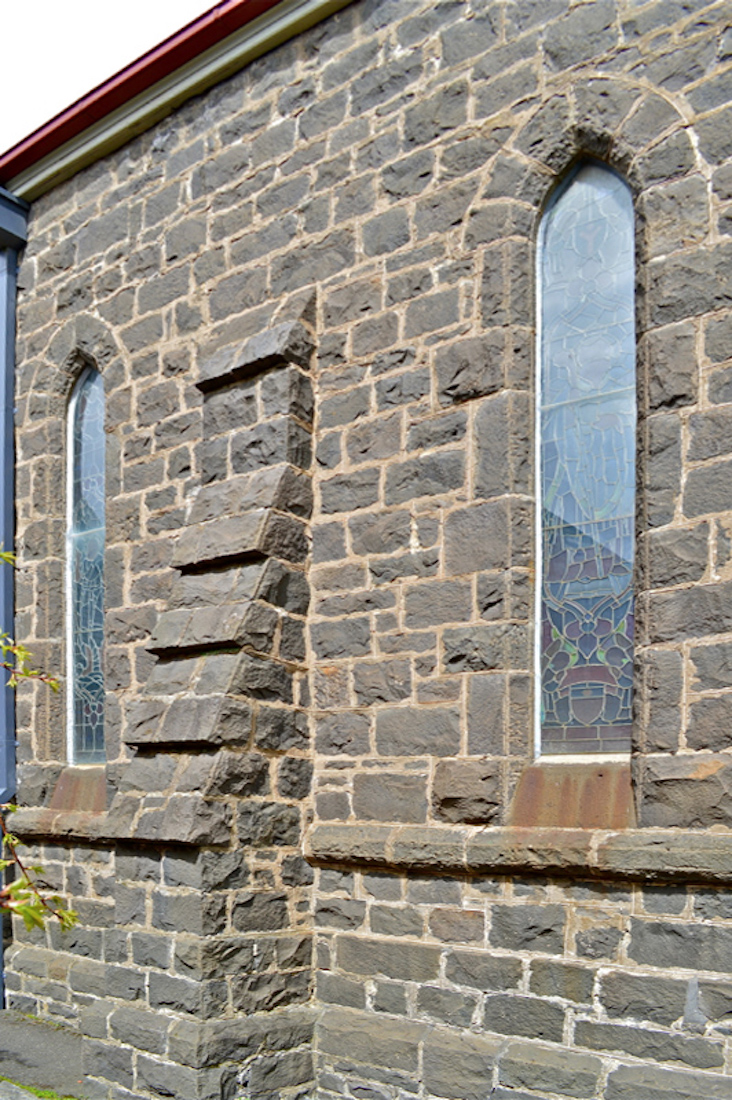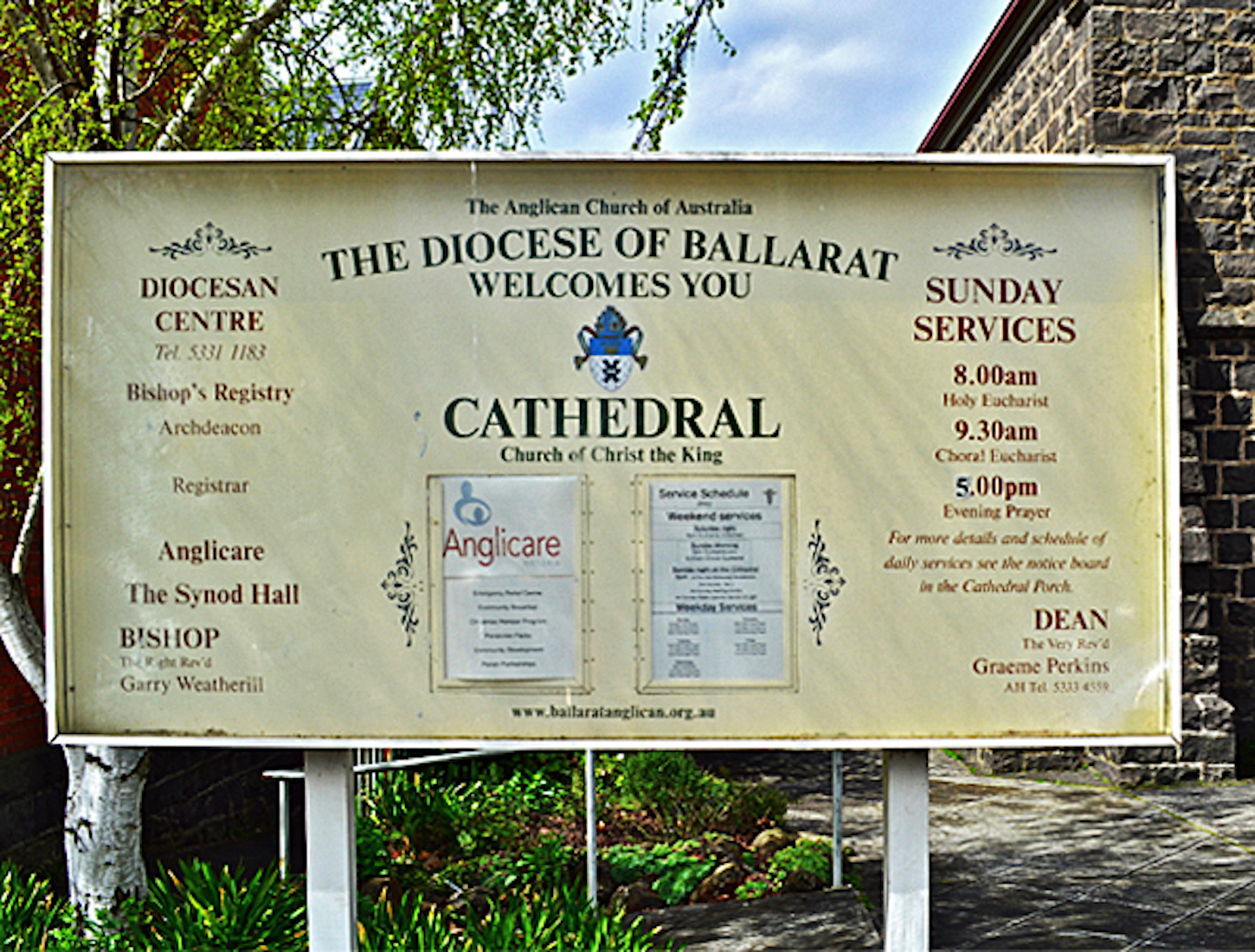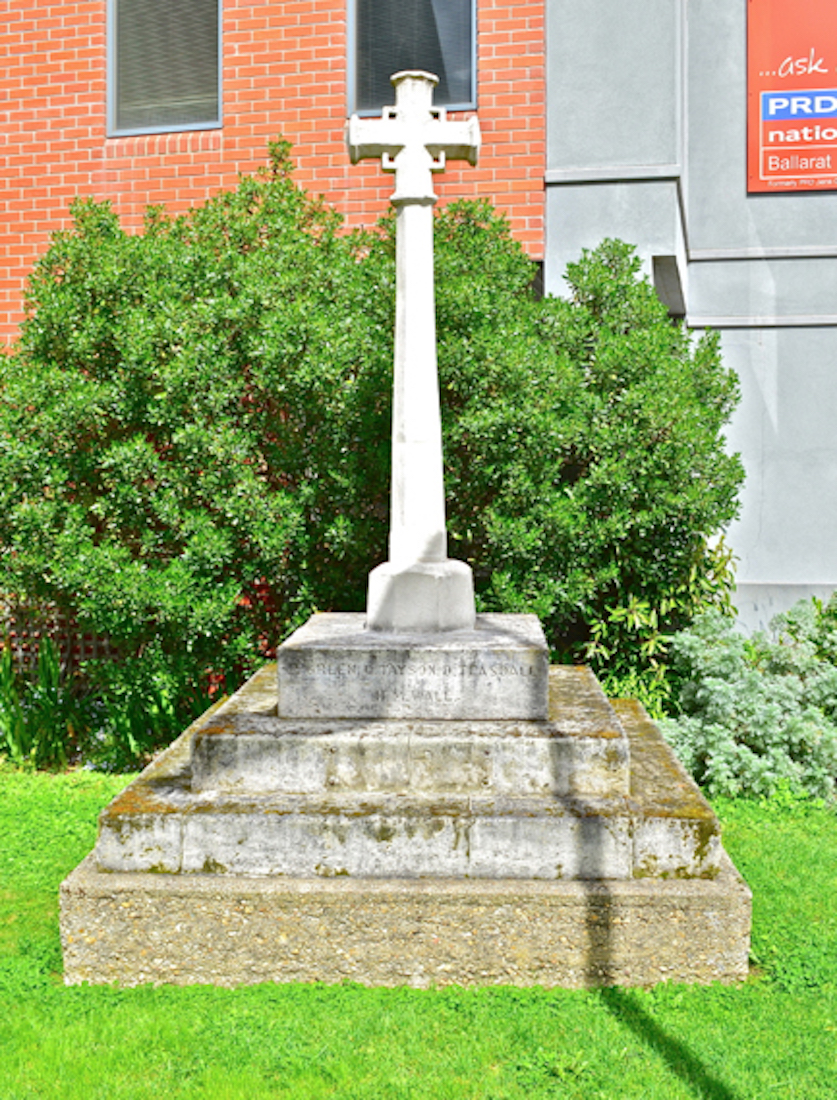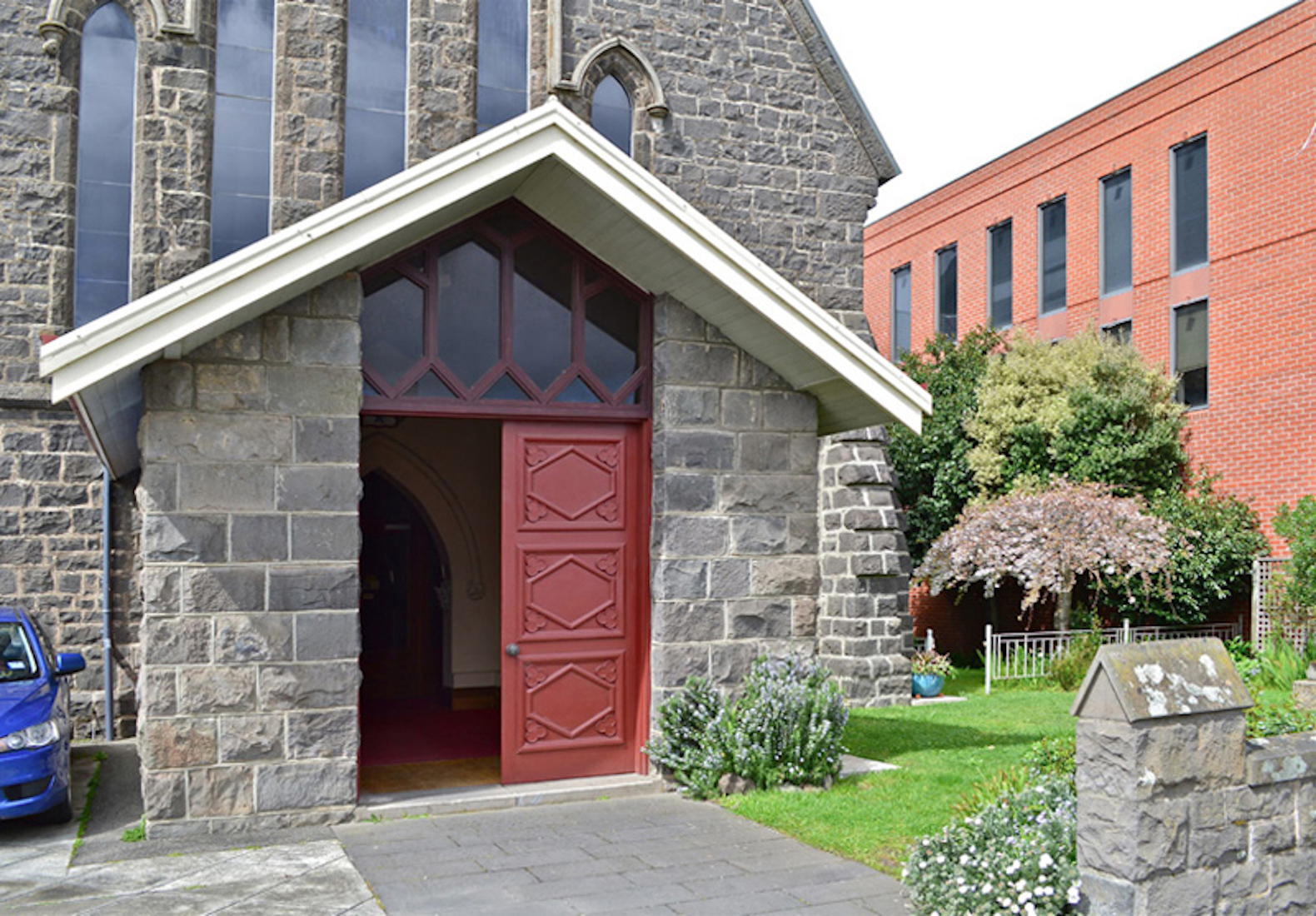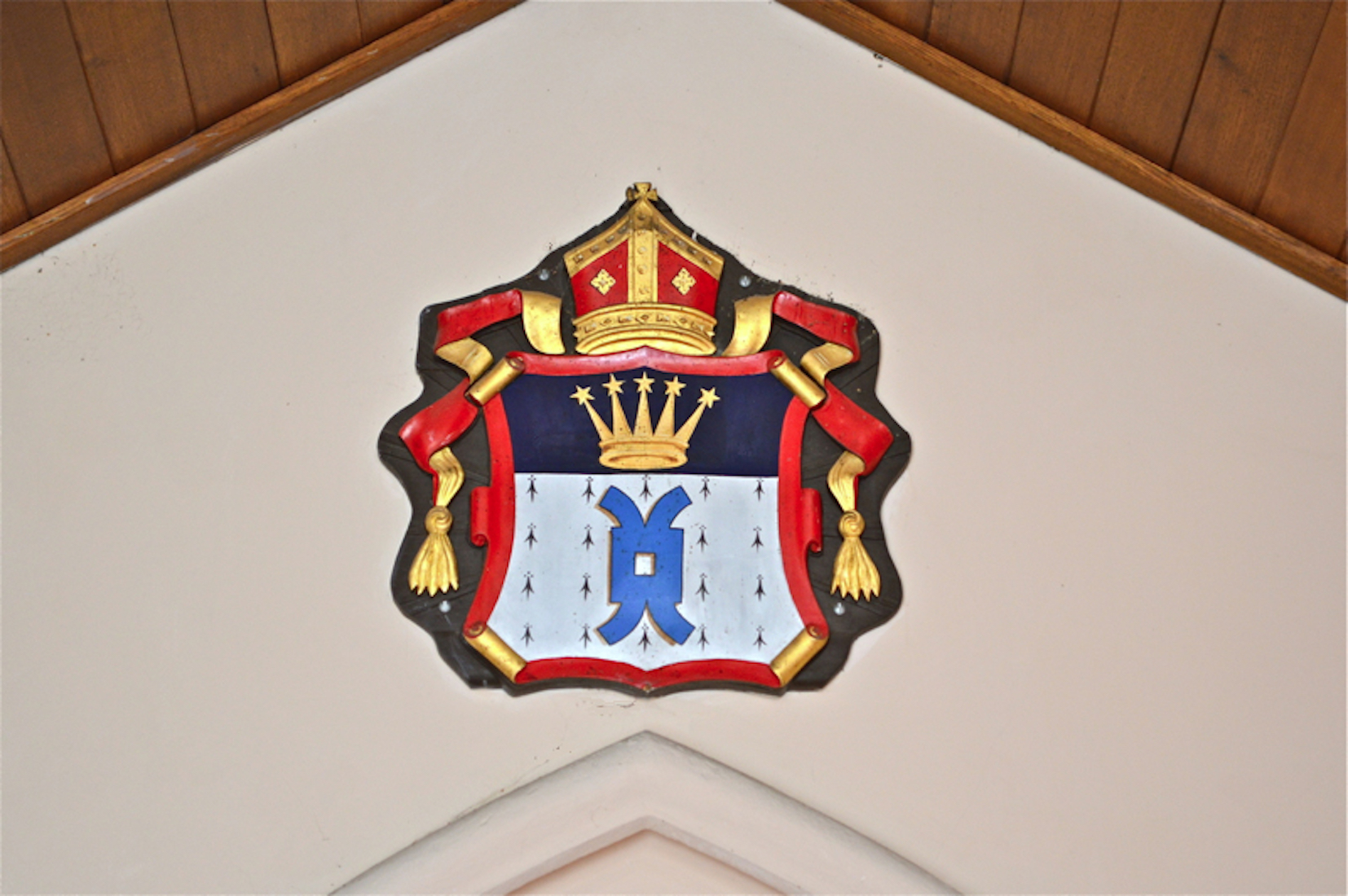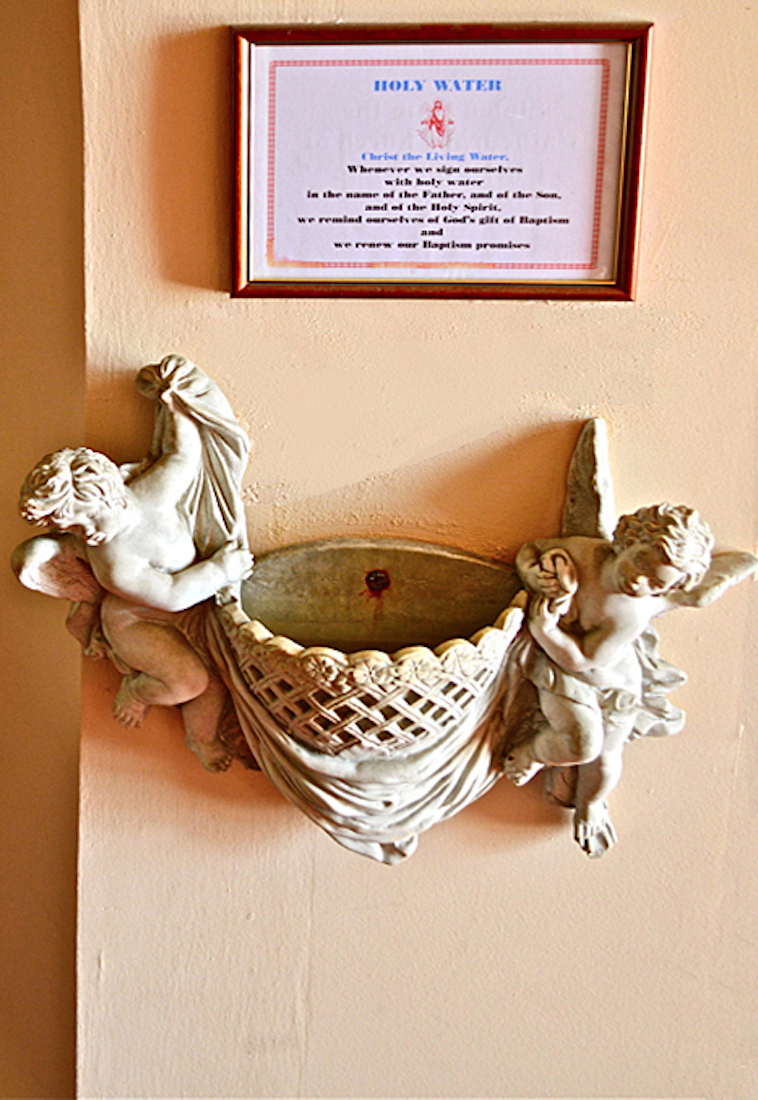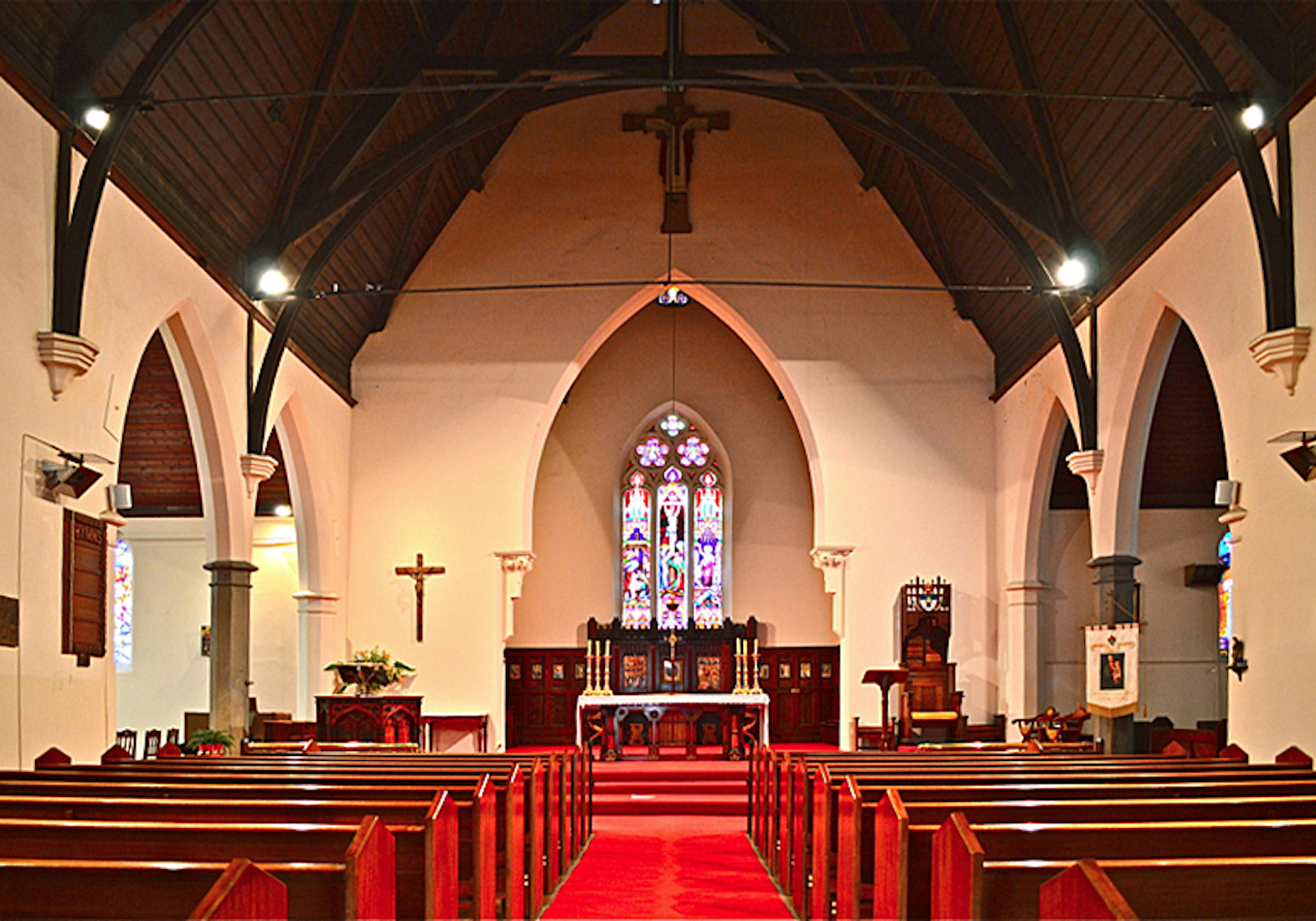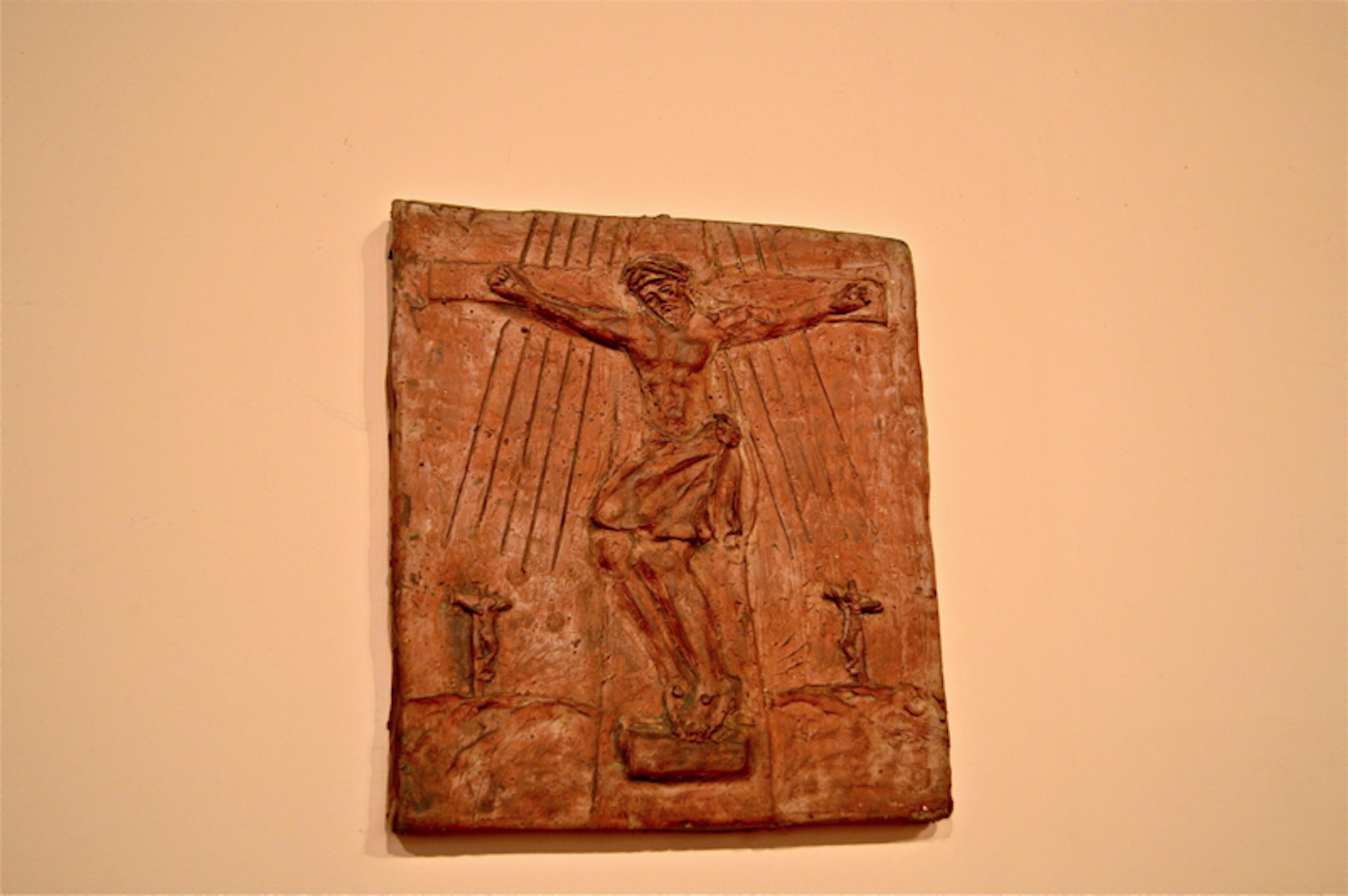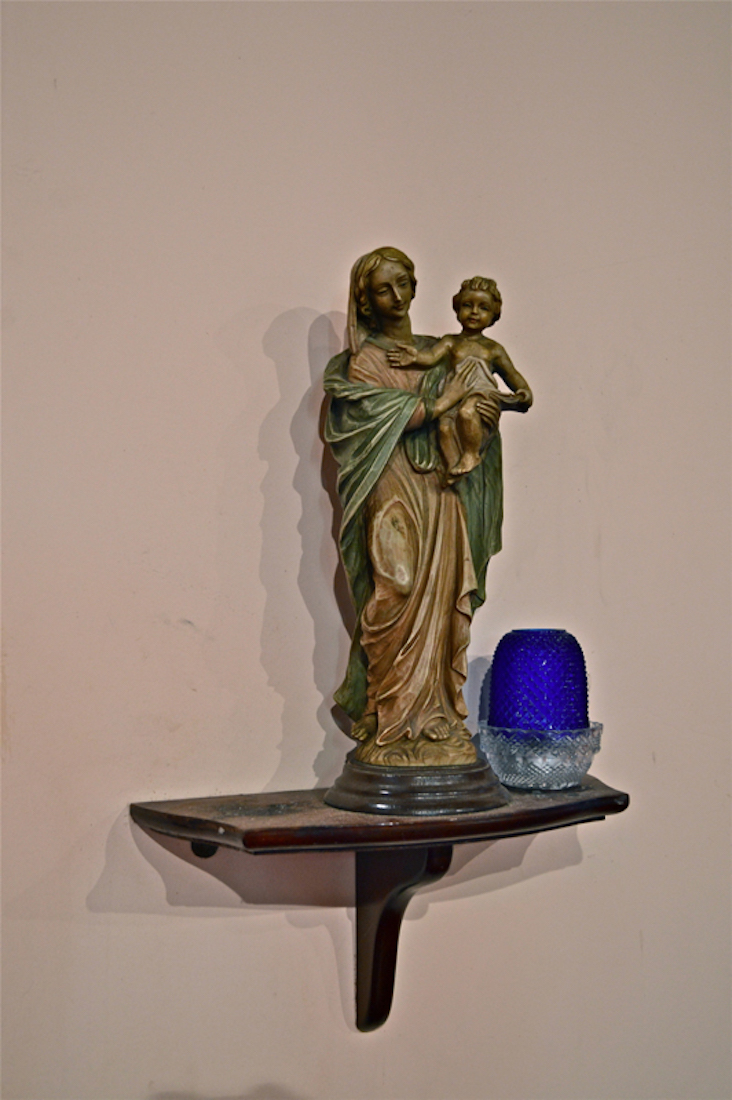
The Cathedral is situated at 49 Lydiard Street, Ballarat, close to the city centre. This satellite view shows that the Church is placed with its liturgical and geographical directions almost coinciding. We see that the Church has a cruciform shape with the Eastern Sanctuary area on a smaller scale, and a small Narthex at the Western end. The Northern Transept gives access to a large octagonal hall, from which there is access to Anglicare Services, and Cathedral Administration offices. The Anglican community had a small church in Armstrong street in 1853, but in the next year the building of this Church was begun. PLAN
2. GABLE DETAIL
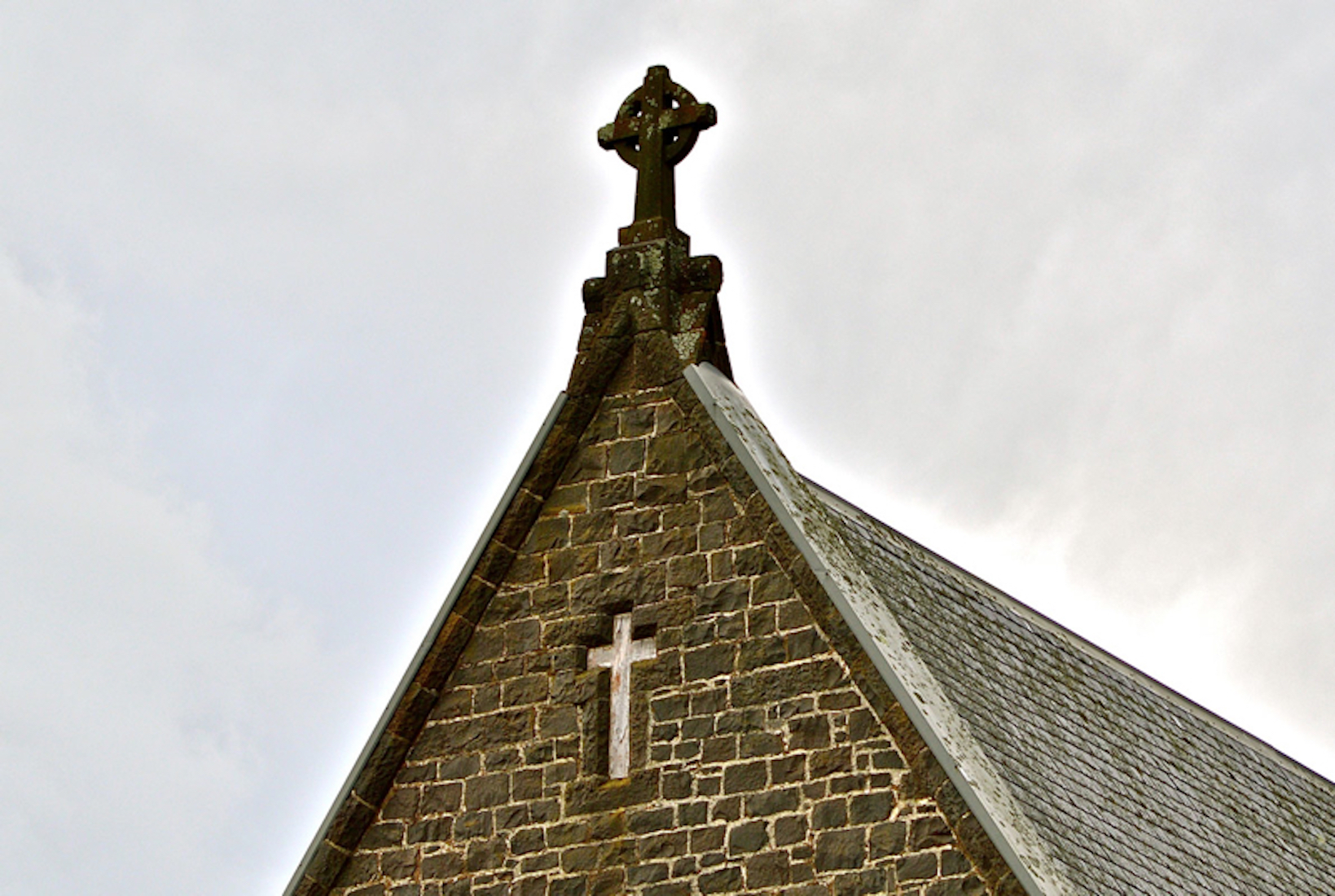
At the top of each gable stands a simplified Celtic cross, or ‘cross with nimbus’. What does the circle symbolize? A halo? a crown? the sun? the Divine presence? The answer is lost in antiquity.
3. NORTH SIDE
The North side of the Cathedral. The dark stone stands out against the white spring blossom. The roof line of the Transept is much lower than the roof of the Nave.
4. NORTH DOOR
This view of where the North Transept joins the Nave is something of a mystery. Is this an old Baptismal Font? The door appears not to be used any more, covered by a curtain inside.
5. NORTH WALL
The North wall of the Cathedral. The Church is constructed from basalt, quarried at Bond Street, Ballarat. Note the stone used here in the window sills.
6. SIGN
The Church sign declares the Cathedral status. Parishes in the Ballarat Diocese are: Buninyong, St. Peter's, Ballarat, St. Paul's Ballarat, St. John's, Ballarat, St. Matthew's, Wendouree, Sebastopol, Ararat, Ballan / Bungaree (Mission District of St Augustine of Canterbury), Beaufort & Skipton, Colac, Kowree (Edenhope), Glenelg-Wannon, Hamilton, Horsham, Mission District of Lower Glenelg (Portland & Heywood), Mission District of St Francis (Camperdown & Holy Apostles), Mortlake, The Otways, Port Fairy, Springmount, Stawell, Warracknabeal, Warrnambool, West Wimmera, Woady Yaloak.
7. MEMORIAL CROSS
In the South West corner of the Cathedral grounds stands a Cross of Remembrance.
8. SOUTH SIDE
The Southern aspect of the Cathedral is its most attractive with its Memorial Garden – the resting place of the ashes of members of the Cathedral, lawn and blossom tree.
9. FRONT ENTRY
Members of this congregation have mixed views about their Cathedral and its situation. Some yearn for the grand Cathedral with tower that was once planned. Others appreciate the intimacy of the smaller Church. The central position of the Cathedral bears witness to Christ being at the Centre. Let’s come in past the ‘letter box’ and through the inviting entryway.
10. COAT OF ARMS
Inside the Narthex, above the door into the Cathedral we find the Ballarat Diocese Coat of Arms. One of the crowns is likely to allude to the name of the Cathedral, but I have been unable to find a description.
11. OLD BELL
The old Church bell stands inside the front porch. A photograph appearing in a 2007survey suggests that the bell was recently in use, perhaps mounted on the roof of the adjacent church building?
12. HOLY WATER
Opposite the bell, two cherubs adorn a bowl (stoop) of Holy Water. A nearby sign tells of ‘Christ the Living Water’, and reminds worshippers that whenever they sign themselves with holy water in the name of the Father, the Son and the Holy Spirit, they remind themselves of God’s gift of Baptism, and renew their Baptism promises. It appears that this was brought back from Italy by Father Bill Edebohls.
14. WEST WINDOWS
Behind us and above, we see a triple lancet showing the Ascension of Christ. Angels worship, whilst below, three small crosses remind us of Calvary. These windows were given in memory of four devoted worshippers: Iris Sydney Gilbert, Jane Anne Morrin Must, James and Maud Mary McKay. They were donated by their families. The artist is unknown. The windows were dedicated 9/5/1965.
15. FONT
In the South West corner of the Cathedral stands the baptismal font. The rite of baptism is the entry into the Church.
16. FONT CORNER
The wall behind has a number of Memorial Plaques. Beside the font stands a hand decorated Paschal candle. This is particularly associated with Easter, alluding to Jesus as the Light of the world, but we can trace its origins back to the Old Testament Passover.
17. FONT CHERUBS
Above the font, two cherubs hold candles.
18. SIDE WINDOWS
The Cathedral has attractive stained glass windows. This pair is on the South side of the Nave. The window on the left depicts Christ the pioneer and perfecter of our faith (Heb 12:2). The window at right shows Christ the hope of glory (Col 1:27). The anchor is a symbol of hope. These two windows were given in memory of Esther Emmerson, a generous benefactor of this church, who died 30/10/1899.
19. STATION OF CROSS
Also positioned on the walls of the nave are the stations of the cross. This station shows Christ on the Cross, with the thieves on either side. The plates are constructed out of copper, and the detail is only discernible from close up.
20. MOTHER AND CHILD
Approaching the crossing of transept and nave we find this sculpture of Madonna and Child.


